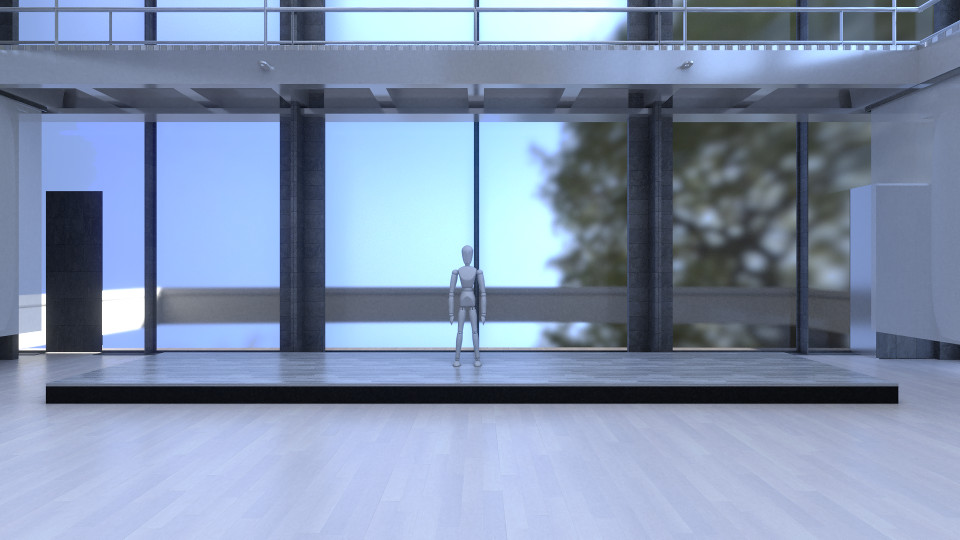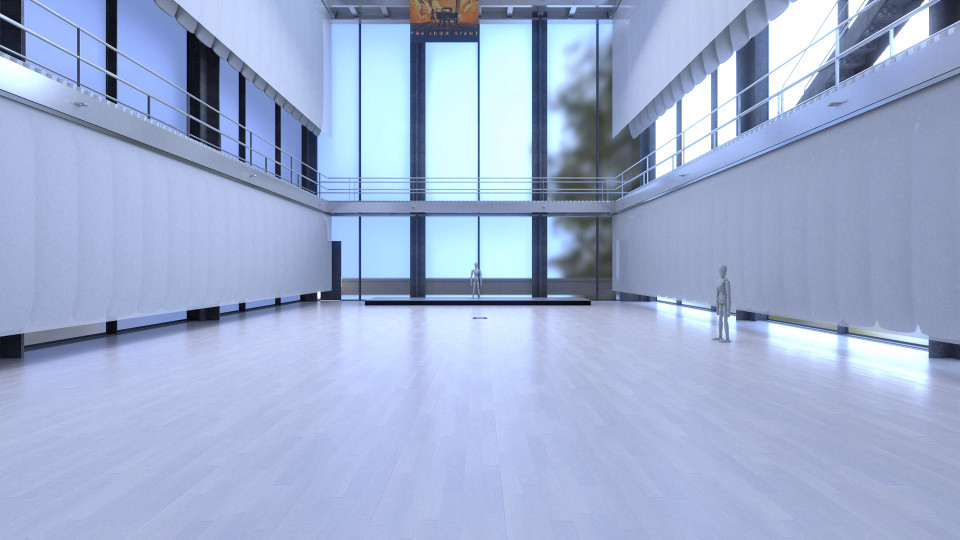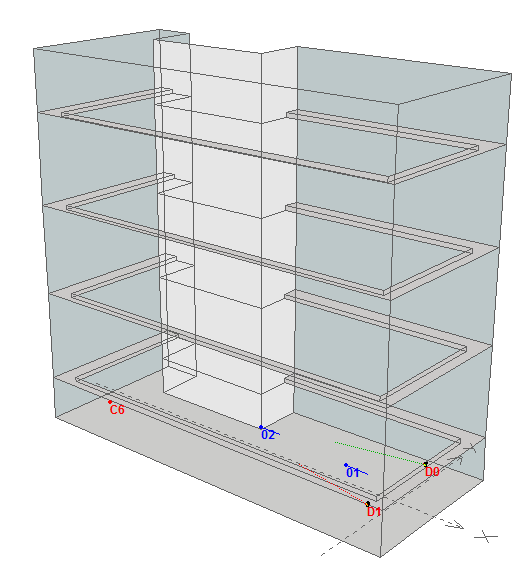

This work was a case study in the context of the thesis of David Thery, and carried out in collaboration with the theatre and acoustic consulting firm Theatre Projects. The architectural project in question concerned plans for a new building comprising a large glass box space potentially used for exhibitions/conferences and performances.
For this case study, our goal was to present a series of auralizations of different design schemes to the project team in order to examine the impact of this method of communication on the design decision process, as opposed to more traditional methods of communication. For this study, we presented 3 versions of the design: without variable acoustic treatment, with lightweight absorption (high frequencies dampening), and additional low frequency inflatable “AQflex” absorbers. The choice of materials and placement was provided by the design team. The contribution of noise pollution from a lower level was also examined.
Several use cases were tested, including small music ensemble, amplified recorded music, and a dinner banquet. These events provided examples that would be relevant for the design team when considering the acoustic conditions of the space. Two listener positions were considered, near the stage and far from the stage, to highlight the range of acoustic conditions.
The GA model was created from blueprints and dimensions extracted from the architectural model provided under Revit.
The different acoustic conditions (variable absorption) were included as options, resulting in 3 simulated conditions. Various source positions were defined equating to the instruments of the jazz ensemble, a pair of stereo speakers as would accompany amplified music, and a natural voice source for a banquet lecture. Additional sources were positioned around the floor area to provide background noise sources, e.g. bruhaha of banquet attendees.

A visual model was created to complement the auralization using flat perspective and 360° images that would serve as a base for the flat and 360° auralization video, the latter exported for rendering on an Oculus Go combined with quality headphones, allowing presentation of the auralizations outside of laboratory conditions. The model was created in Blender, rendered in Cycles.
It was decided to provide a static image only, without animation, to maintain focus on the acoustics and to provide a result comparable to what could be feasibly produced in a consulting context. Providing a 360° image, combined with 2nd order Ambisonic audio, allows for real-time head-orientation during playback, improving immersion by the client/listener.
360° video file auralizations were created by combining the static pendered panoramic image and convolved Higher Order Ambisonic (HOA) audio for each of the absorption conditions, source material, and listener positions. We present here examples of the "Banquet" use condition, using several recorded anechoic speech extracts played over the planned audio system, as well as recordings of dining activity for the banquet attendees which varies with the speaker's activity. An event taking place was included in the lower galleria, highlighting the importance of the isolation performance of the removable panel (shown as rippled glass behind the listener position) over the stairwell separating the upper and lower levels.
These examples should be listened to over headphones, and preferably in full-screen so that you can easily modify the head orientation which is taken into account by the HOA to binaural decoder in the player.